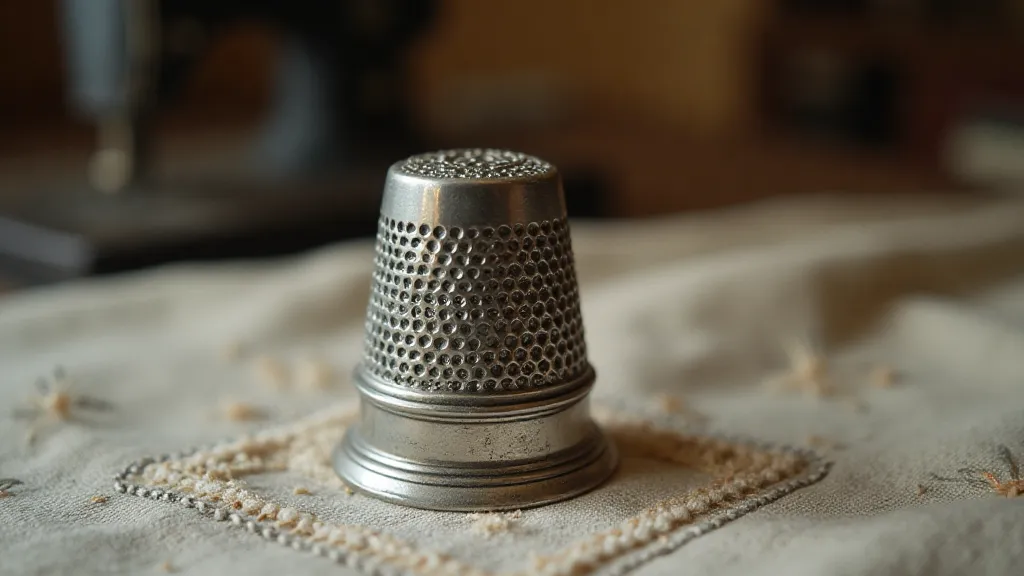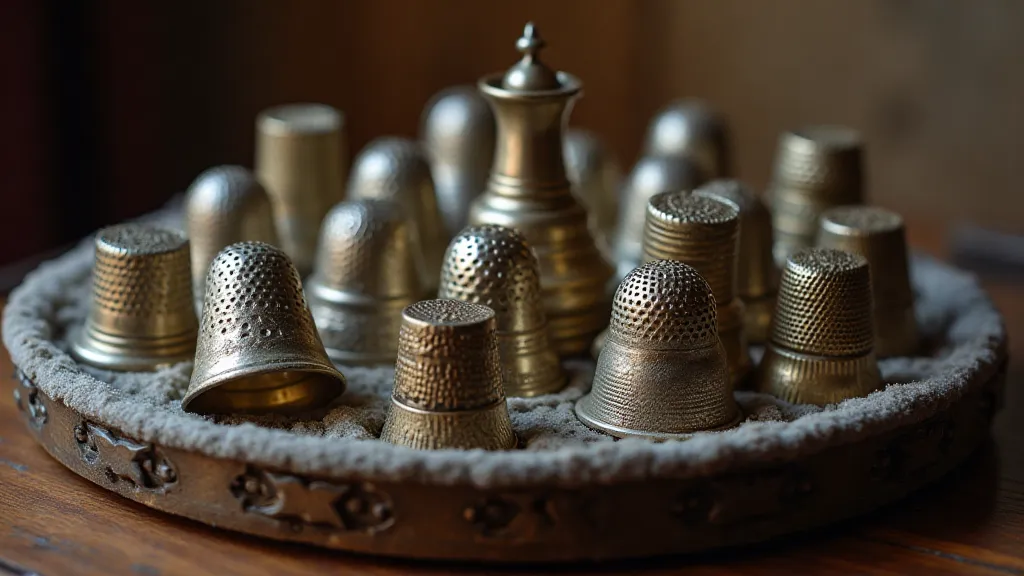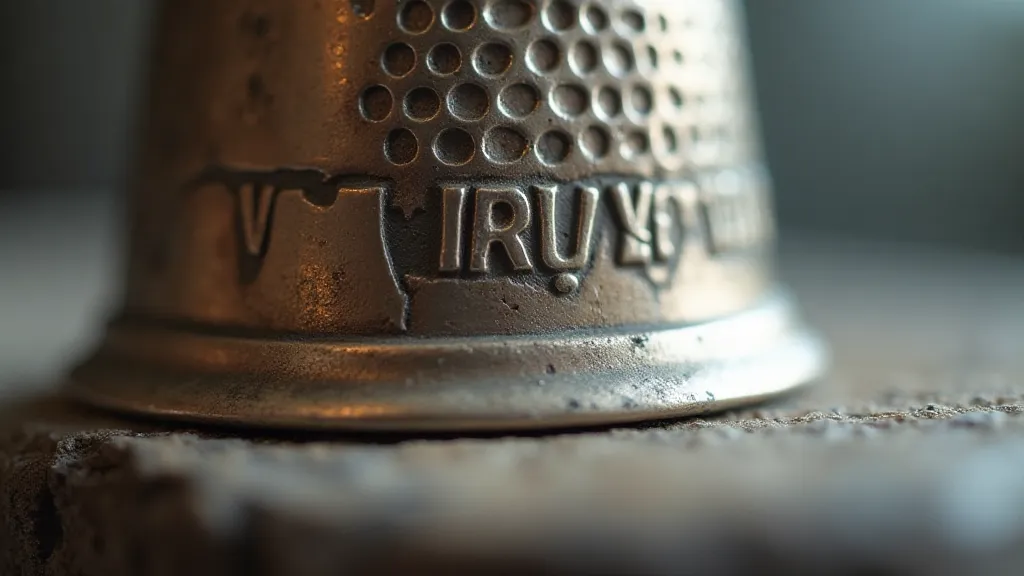The Miniature Pantheon: Thimbles as Symbols of Status & Societal Rites
There's a quiet dignity in holding a truly old thimble. It's more than just a small, metal cap; it's a tangible link to generations of hands, a silent witness to countless hours of mending, creating, and connecting. For centuries, the simple act of sewing has been inextricably woven into the fabric of human society, and the thimble, the humble tool at its heart, has often served as a surprising indicator of social standing, belonging, and the performance of specific societal roles. Let’s delve into the fascinating world of antique thimbles, not just as collectibles, but as miniature artifacts reflecting a complex tapestry of historical context and human aspiration.

From Necessity to Signifier: The Early Days
Initially, thimbles weren’s the beautiful, ornate objects we often see today. Their origins are hazy, likely developing organically across various cultures. Early versions, appearing as far back as the 2nd century AD in Roman Britain, were often rudimentary – leather finger stalls, wrapped cloth, or simply the tip of the finger itself toughened by repeated use. The arrival of the metal thimble, generally accepted to be of European origin, coincided with the increased popularity of sewing machines and standardized needlework practices in the 15th and 16th centuries. These early metal thimbles were functional necessities; a small investment to protect a seamstress's finger from the constant prick of the needle. But as with many items that transition from pure utility to consumer goods, their inherent value quickly extended beyond mere practicality.
The materials used were a key differentiator. Common folk would typically use pewter or brass, inexpensive and readily available. For those of higher status, silver became the preferred metal – a subtle, yet potent, display of wealth. Imagine a prosperous merchant’s wife, meticulously sewing a fine garment, her silver thimble gleaming softly in the candlelight. It wasn't just about protecting her finger; it was a quiet declaration of her family's position.
The Rise of Ornate Decoration and Regional Styles
The 18th and 19th centuries witnessed a flowering of decorative styles within thimble making. As industrial production became more sophisticated, ornamentation flourished. Floral motifs, scrolling vines, and delicate embossed patterns became increasingly common, particularly on silver and later, plated thimbles. This wasn's just artistic expression; it was a visual language. Certain patterns – perhaps a specific heraldic crest – might indicate familial connections or membership in a guild. Regional styles also emerged, influenced by local crafts and traditions. German silver thimbles often featured intricate engraving, while French thimbles were known for their delicate chasing and filigree work. These regional nuances become incredibly important to a serious collector. The impact of these local industries isn't always apparent, but careful examination often reveals silent witnesses to the traditions of lost domestic industries.
My grandmother, a remarkable woman who learned to sew from her own mother, possessed a small collection of thimbles. I remember, as a child, being mesmerized by them. One, a particularly ornate silver thimble engraved with a stylized rose, always stood out. She’s told me later in life that it belonged to her great-grandmother, a dressmaker who served a prominent family in the countryside. That single thimble, in her eyes, represented more than just a sewing tool; it symbolized connection, heritage, and a skill passed down through generations. It's a feeling I’m sure many have experienced when holding an heirloom. Many antique thimbles tell stories that go beyond their aesthetic appeal, and for some families, these objects are more than just collectibles - they are keepers of cherished memories, and a pathway to understanding a pocketful of memories linked to migration and storytelling.
The Thimble as Marker of Profession and Role
Beyond wealth and familial ties, thimbles often served as identifiers of profession or social role. Agricultural workers might have a simple, functional thimble made of iron or steel. A military officer’s wife, mending uniforms for her husband and his men, might possess a thimble bearing a military emblem or crest. Sailors’ wives, keeping busy patching sails and clothes, might own thimbles decorated with nautical themes – anchors, ships, and mermaids. The act of mending was intrinsically linked to caring, to providing, and to maintaining the structures of society. The thimble became a miniature emblem of that responsibility.
The rise of specialized industries also influenced thimble design. The 19th century saw the growth of the textile industry, leading to an increased demand for fine tailoring and dressmaking. Tailors’ thimbles were often made of stronger materials, like steel or horn, designed to withstand the constant use of heavy needles. Dressmakers’ thimbles, on the other hand, were often decorated with delicate floral patterns or embossed designs, reflecting the artistry and precision of their craft. The dedication it took to produce these delicate adornments often bordered on obsession; stories of devoted collectors reveal the collector's shadow – a fascinating glimpse into the pursuit of miniature perfection.

The 20th Century and Beyond: From Functional to Collectible
The advent of mass production in the 20th century democratized thimble ownership, but it also, paradoxically, cemented their status as collectibles. While functional thimbles continued to be produced, the beautifully crafted, intricately decorated antique thimbles became increasingly rare and valuable. The rise of hobby collecting further fueled the appreciation for these miniature artifacts.
The materials used to create these treasures, and the intricacies of their creation, are testaments to the skill of their makers. The use of precious stones to elevate a humble tool reveals the jeweler’s secret – a world of artistry and craftsmanship often hidden within the most unassuming objects. Beyond the metal itself, the precision engineering that went into these miniature wonders often rivals that of clockmaking; the clockmaker’s legacy is evident in the meticulous detail and flawless execution.
The story doesn’t end there, of course. The value often extends far beyond monetary worth, reflecting more than just the materials used; it’s an embodiment of the history and narratives attached to these miniature artifacts.
When examining an antique thimble, look for hallmarks – tiny stamps indicating the maker and sometimes the year of manufacture. Researching these hallmarks can provide valuable information about the thimble’s origin and value. Handle them with care, avoiding harsh chemicals and abrasive cleaners. Proper storage in a protective case will help preserve their condition for generations to come. And most importantly, appreciate the history and the stories embedded within each tiny treasure.

The next time you hold a thimble, take a moment to consider its journey through time. Remember the hands that crafted it, the lives it served, and the stories it holds. For in these miniature pantheons, we find not just collectibles, but echoes of the past, reflections of our shared humanity. Their value extends beyond their monetary worth; they are tangible links to a past where craft and necessity intertwined, where a simple tool could become a symbol of status, a marker of profession, and a treasured heirloom passed down through generations. Consider the countless hours of labor invested in their creation, the lives they served, and the stories they hold – they are miniature windows into a vanished world.
Further research into the history and provenance of antique thimbles can reveal a surprisingly rich tapestry of social and economic factors. The materials used, the decorative motifs employed, and even the style of lettering on the hallmarks can provide valuable clues about the thimble’s origin and the person who once held it. The study of these objects isn’t just about appreciating their beauty; it’s about understanding the stories they tell and the cultural significance they hold.





